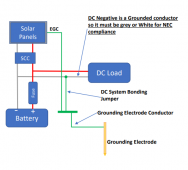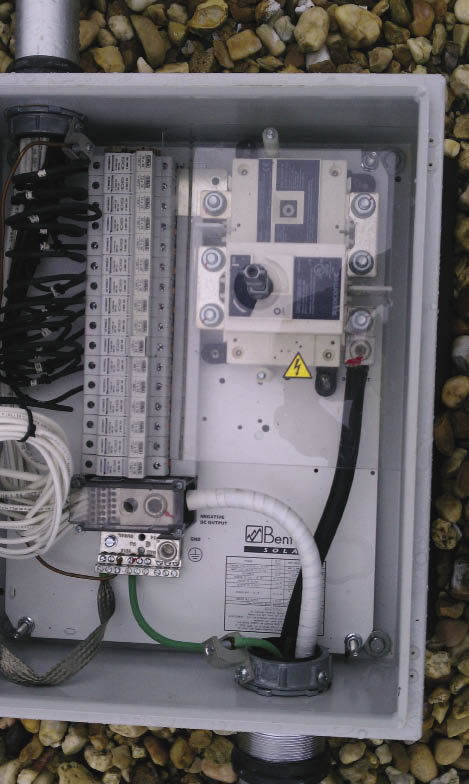Bazzar
New Member
Hi guys, I'm not having a good day here as I have somehow forgot to run a earth/ground for my solar array and not sure how I'm going to fix it and hoping I didn't mess up too bad here... I just got the system finally hooked up less then a week ago and it seems to be working so far so that's good I think.
The array is on a DIY ground mount framed in wood with Unistrut for rails.
I have 4x rec 310w panels run in 2 strings of 2 back to 2 charge controllers using 10awg wire with about a 90ft run one way.
The solar wires are in conduit underground from the house to the panels and then continue in conduit under the house to my room where the solar system lives.(see pics)
The solar array is the only "permanent" mounted part of this system. The inverter, batteries solar charge controllers are all mounted to a hand truck in my room with 2p breakers and MC4's to disconnect the solar panels making it a mobile system(see pic).
I think my main concern in this system is static buildup and nearby lightning strikes.
I use it to power my room off grid so far and plan to be able to power critical loads in the house during power outages.
Now from what I'm reading It would be best to somehow get another wire from the array to the houses grounding rod correct?
I think I might be able to get one more wire into the conduit but I'm not sure... its going to be tough (see update).
But I need the wire to go to the ground rod outside, not in to my room...
I'm not planning on earthing the 12v dc portion of the system since its mobile.
The inverter is earthed either by the 120v charging plug that's normally plugged into the house or by the generator inlet plug if I'm back feeding the house.
The Charge Controllers earths are tied to the inverters earth lug so they should be earthed as long as the inverter is.
Options I come up with:
See Update post below
Questions:
Should I disconnect the solar array from the charge controllers till I get this fixed or is it still safe to use for now?
I've tried to give as much info as I can but if you can think of something I missed let me know, wouldn't be the first time.
In the picture of the back of the house the grounding rod is right by the Air Conditioner and electric panel there. My room is the one to the right there with the window A/C and you can see the window in the pic where the wires come into my room.
Thanks guys, Bazzar
ps. Don't mind the mess on the back patio, spring cleaning.
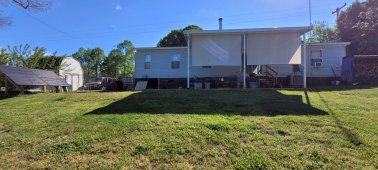
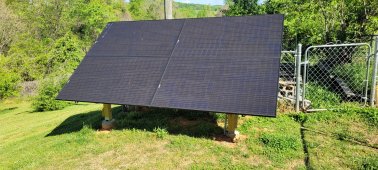

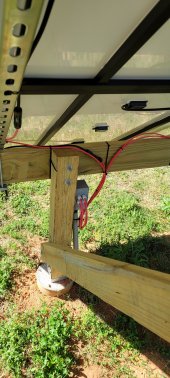
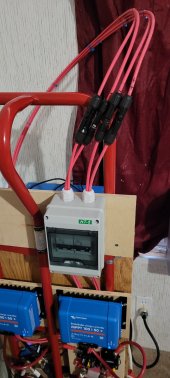
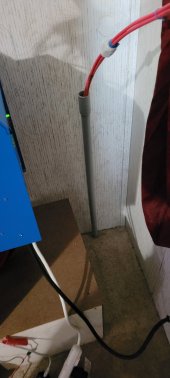
The array is on a DIY ground mount framed in wood with Unistrut for rails.
I have 4x rec 310w panels run in 2 strings of 2 back to 2 charge controllers using 10awg wire with about a 90ft run one way.
The solar wires are in conduit underground from the house to the panels and then continue in conduit under the house to my room where the solar system lives.(see pics)
The solar array is the only "permanent" mounted part of this system. The inverter, batteries solar charge controllers are all mounted to a hand truck in my room with 2p breakers and MC4's to disconnect the solar panels making it a mobile system(see pic).
I think my main concern in this system is static buildup and nearby lightning strikes.
I use it to power my room off grid so far and plan to be able to power critical loads in the house during power outages.
Now from what I'm reading It would be best to somehow get another wire from the array to the houses grounding rod correct?
I think I might be able to get one more wire into the conduit but I'm not sure... its going to be tough (see update).
But I need the wire to go to the ground rod outside, not in to my room...
I'm not planning on earthing the 12v dc portion of the system since its mobile.
The inverter is earthed either by the 120v charging plug that's normally plugged into the house or by the generator inlet plug if I'm back feeding the house.
The Charge Controllers earths are tied to the inverters earth lug so they should be earthed as long as the inverter is.
Options I come up with:
See Update post below
Questions:
Should I disconnect the solar array from the charge controllers till I get this fixed or is it still safe to use for now?
I've tried to give as much info as I can but if you can think of something I missed let me know, wouldn't be the first time.
In the picture of the back of the house the grounding rod is right by the Air Conditioner and electric panel there. My room is the one to the right there with the window A/C and you can see the window in the pic where the wires come into my room.
Thanks guys, Bazzar
ps. Don't mind the mess on the back patio, spring cleaning.






Last edited:




